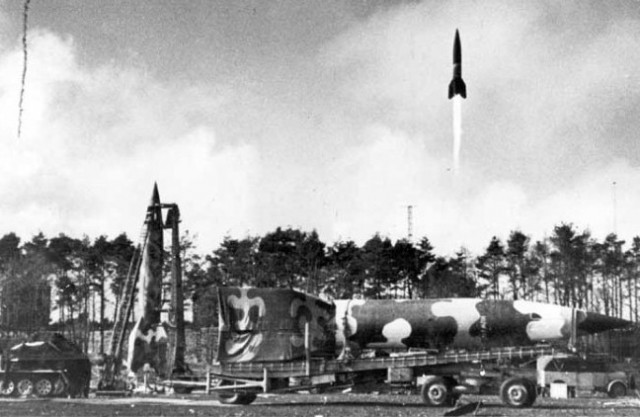
A pagina 6 fa la sua prima comparsa la macchina protagista, presentata con un'efficace descrizione della sua traiettoria di avvicinamento:
"Far to the east, down in the pink sky, something has just sparked, very brightly. A new star, nothing less noticeable. [...] The brilliant point has already become a short vertical white line. It must be somewhere out over the North Sea . . . at least that far . . . icefields below and a cold smear of sun. . . .
What is it? Nothing like this ever happens. [...] It’s a vapor trail. Already a finger’s width higher now. But not from an airplane.
Airplanes are not launched vertically. This is the new, and still Most Secret, German rocket bomb."
Nel finale del romanzo il razzo diventa poi una vera entità trascendente che oltrepassa la sua realtà di macchina di distruzione e cambia irrevocabilmente le esistenze dei personaggi, come viene sottolineato anche dall'impiego della lettera maiuscola nel nominarla:
Before the Rocket we went on believing, because we wanted to. But the Rocket can penetrate, from the sky, at any given point. Nowhere is safe. We can’t believe Them any more. Not if we are still sane, and love the truth.”
(pag. 728)
"So, yes yes this is a scholasticism here, Rocket state-cosmology . . . the Rocket does lead that way—among others—past these visible serpent coils that lash up above the surface of Earth in rainbow light, in steel tetany"
(pag. 726)
Nessun commento:
Posta un commento